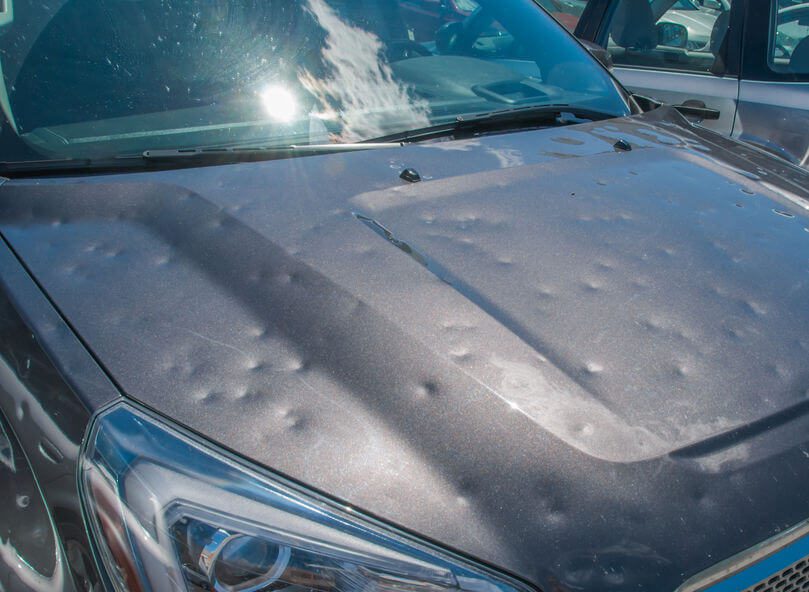How do I protect myself from a hail storm?

Hail pellets suddenly hitting the window can be kind of thrilling, until the hail pellets become large balls of rock hard ice. Surprisingly, the largest hail ball measured the U.S. was 7.9 inches in diameter. This dangerous ball of ice fell on Vivian South Dakota during a hail storm on July 23, 2010.
This post delivers two needed items. One, explaining what causes a hail storm. Two, guidance to help you prepare for these destructive events.
Start by knowing how good your insurance is. Click the buttons below to get a free rating on your insurance companies.
What causes a hail storm?
Large, damaging hail stones are formed inside thunderstorms. The cause of hail stones is raindrops being carried upward into cold areas of the atmosphere. As these frozen raindrops travel upward, they collide with other raindrops, creating larger hail stones.
What causes the hail stones to fall to the ground?
There are two reasons hail falls to the ground. First, as the size of these hail stones increases, eventually they become too heavy for the thunderstorm’s updraft to support. Second, smaller hail stones can be blown away from the updraft by horizontal winds.
Where are hail storms most common in the U.S.?
The probability of a hail storm occurring is a confluence of multiple factors, including:
Continental interiors – not near the coast
Mid latitude – roughly defined as between 23º and 66º north of the equator. Note, this includes all of the continental U.S.
Near mountain ranges – the steep inclines of mountain ranges force horizontal winds upward. The reinforces the updraft effect common in thunderstorms.
Higher elevations – because the hail has less time to melt before hitting the ground
Geographically, this description covers a large portion of the U.S. However, the area most susceptible for having a hail storm includes the states Colorado, Nebraska and Wyoming. In fact, the area has been nicknamed “Hail Alley” because hail storms are so common in the area.
When do hail storms occur?
In the U.S. hail storms typically occur between March and October.
How do I prepare for the next hail storm?
Here are some suggestions on how to prepare for a hail storm:
Trim trees – Hail can crack branches and cause them to fall on your car or home
Park cars in a garage – Cars parked inside provides significant protection
Repaid a damaged roof – a hail storm is likely to worsen damage that already exists
Close drapes – By closing drapes broken glass from hail stones cannot fly into your home as easily
The Most Important Step in Preparation
If you live in an area susceptible to hail storms, you’re going to experience hail damage. No matter how careful you are in preparing, the likelihood you will end up filing an insurance claim is higher than for those who don’t live in a hail storm prone area. Therefore, you need to make sure you have a good insurance company. ValChoice recommends only buying insurance from companies that have a proven track record of excellent performance when paying claims. We make that easy. Click the buttons below to find the best auto insurance and home insurance companies where you live.
NOTE: ValChoice does not get paid by insurance companies for rating them. Also, we do not use data from user surveys or online reviews in our ratings. Both of these methods are notoriously unreliable for rating insurance quality.
About Dan Karr
Dan has been a CEO or Vice President for high-technology companies for over 20 years. While working as a Senior Vice President of Marketing and Sales for a technology company, Dan was seriously injured while commuting to work. After dealing with trying to get insurance companies to pay his significant medical bills, or to settle a claim so Dan could pay the medical bills, he became intimately aware of the complexity of insurance claims. Dan founded ValChoice to pay forward his experience by bringing consumers, insurance agents and financial advisors easy-to-understand analysis needed to know which insurance companies provide the best price, protection — claims handling — and service.







